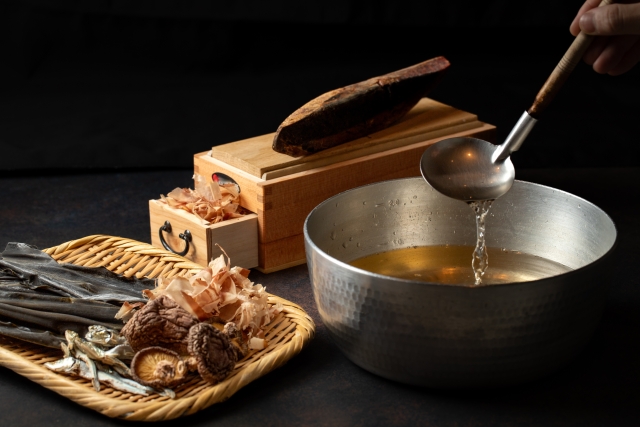
Japanese cuisine is celebrated worldwide for its beautiful presentation and variety. Yet, there is an often unseen but vital element at its core: dashi. Dashi is the backbone of Japanese flavors and plays a key role in enhancing the taste of many Japanese dishes.
What is Dashi?
Dashi is a broth that serves as the foundation of Japanese cuisine, made by extracting the natural umami from ingredients like fish, meat, and vegetables. Key ingredients in dashi include katsuobushi (bonito flakes) and kombu (kelp), which each contribute unique umami compounds—inosinic acid from bonito flakes and glutamic acid from kombu. When combined, these ingredients create a synergistic effect, amplifying the umami and bringing out the essence of other ingredients. Dashi is not just a flavoring; it is the key to highlighting the natural goodness of each component in Japanese cooking.
Regional Differences in Katsuobushi
Katsuobushi (bonito flakes) is produced throughout Japan, and each region has its own specialties. For example, Makurazaki in Kagoshima is famous for its katsuobushi, while Yaizu in Shizuoka specializes in maguro-bushi (tuna flakes) and iwashi-bushi (sardine flakes). These regional specialties add a distinct flavor profile to Japanese cuisine, showcasing the unique character of each area’s dashi ingredients.
Types and Uses of Dashi
Dashi comes in various forms, including thick flakes, thin flakes, and powder, each suited to different culinary applications. Thick flakes create a rich, intense broth perfect for noodle dishes, while thin flakes are ideal for making a delicate, clear soup. Dashi powder offers a convenient way to add authentic flavor to miso soup, simmered dishes, and more.
The Art of Katsuobushi: “Te-biyama” Roasting Method
One traditional method of making katsuobushi is the te-biyama roasting technique, which dates back to the Edo period. This involves smoking and drying the fish over a high flame for over a month, yielding a complex, rich flavor known as “the phantom katsuobushi.” Due to the skill and time required, only a few artisans continue to produce katsuobushi this way. This rare katsuobushi is highly prized by high-end restaurants and popular eateries alike.

(Quote: Tebiyama Marumitsu store:https://marumitsu-tebiyama.stores.jp/)
The Role of Kombu Dashi
Kombu dashi is made from kelp, which contains glutamic acid, a source of umami. Popular types include Hidaka kombu, Rishiri kombu, and Rausu kombu, each with specific uses. Kombu dashi is often paired with bonito flakes or dried sardines to create a deeper, more complex flavor. It serves as the balancing element that enhances the harmony in Japanese dishes.


Leave a reply